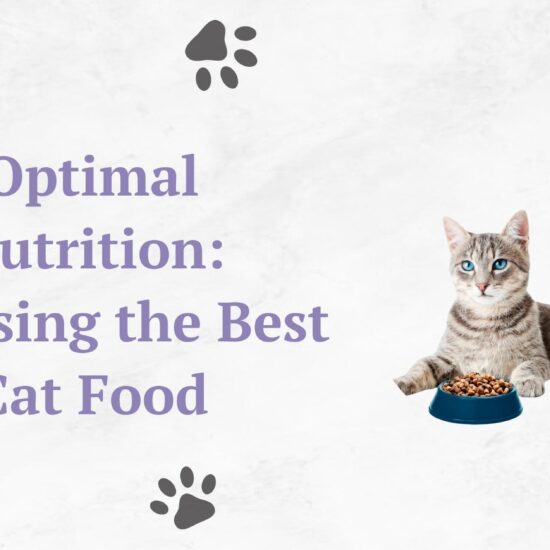Pet fostering has arisen as a pleasant and caring way to help animals in shelters find homes while they wait to be adopted. The many positive effects of this method on both animals and humans have led to a surge in interest in recent years.
Introduction
In this in-depth post, we’ll examine what pet fostering is, why it’s so important, and the many benefits of adopting from a shelter for both foster animals and their new families.

What is Pet Fostering?
Fostering pets is an act of kindness in which people open their homes and hearts to help animals in need, most commonly those that have been rescued from shelters. Dogs, cats, bunnies, birds, and even small mammals are all included in this open arms gesture toward disadvantaged creatures. The essence of pet fostering is giving these creatures a break from their hardships and a second chance at a good life.
Fostering pets is, at its heart, a safe sanctuary where animals who have been through hardship can get loving care and attention. These creatures, many of whom are rescued from situations of neglect, abuse, or uncertainty, are given the gift of a secure and loving home. Their physical and mental wounds find solace in this transient haven. Foster families are crucial in this recovery process because they provide unconditional care, affection, and persistence.

3 Reasons Why Pet Fostering is Needed
These acts of compassion allow rescued animals to get healthy again, learn to trust humans again, and improve their social skills, all of which are crucial for them to be adopted. Pet fostering exemplifies the extraordinary influence that individuals and families can have on the lives of animals and the limitless potential for empathy they possess. When people open their homes to animals in need, those animals receive much more than just a place to stay; they also receive hope, healing, and the possibility of a better future.
- Pet Fostering is the Best Solution to Overcrowded Shelters
Despite their vital role as havens of safety for animals, animal care and adoption centers frequently face the formidable obstacle of inadequate funding, space, and resources. Overcrowding within the shelter walls is the result of these limitations, which can have serious effects for the animals confined there. Animals are more likely to experience stress, disease, and behavioral issues under overcrowded conditions.
3 Greatest Harms of Overcrowded Shelters
- Overcrowding as Leading Cause of Stress
Overcrowding in animal care and adoption centers is a leading cause of stress. Shelter inhabitants may experience increased anxiety due to the presence of strange animals, a lack of privacy, and the continual bustle and activity. Their immune systems can be weakened by stress, leaving them more susceptible to illness in addition to its mental health effects.
- Disease Transmission Due to Overcrowding
Disease transmission is heightened by the crowded conditions. The health of the animals is put at risk by the increased likelihood of contagious diseases spreading rapidly in such a confined space. Sick animals are difficult to care for in small places because of their need for isolation and specialized care.
- Behavioral Issues Due to Overcrowding
Overcrowded shelters also increase the risk of behavioral issues. When animals, especially domesticated ones, are under constant stress, they may become uneasy or even hostile. Adoption agencies may have a harder time placing animals with adopters if they exhibit such behavior.
Overcrowding in shelters is a major problem, and pet fostering has emerged as a crucial solution. Fostering is the temporary placement of shelter animals with caring individuals. In this manner, foster families significantly contribute to solving the shelters’ overpopulation problem.
When animals are placed in foster care, it not only frees up space in the shelter but also gives the animals a break from the tense environment of the shelter. The less stressful and more caring environment seen in foster homes is beneficial to the health of the animals living there. This, in turn, can strengthen the animals’ immune systems, protecting them from disease.
In addition, the one-on-one care that foster homes offer is invaluable. Foster homes provide the attention, affection, and companionship that animals in shelters often lack. Stress and worry can contribute to behavioral issues, and this individualized care can help reduce such issues in the shelter.
While all animals in shelters should be given a second chance, some may need special attention because of physical or mental health issues or because they have experienced trauma. In a shelter, where resources are limited and individualized care is difficult to give, animals with specific needs often have a harder time thriving.
For animals like these, foster care is a lifeline. Foster homes that are prepared to take in animals with special needs and provide for them are crucial to the animals’ recovery and rehabilitation. Foster homes fill the void and supply the particular care that these animals require, whether it is the administration of medication, the provision of physical treatment, or the provision of emotional support.
An animal in need of care can thrive in the safe and nurturing setting of a foster home. A calmer, less stressful environment helps speed up the healing process for sick animals. Additionally, animals with behavioral issues can get the individual care they need to be effectively treated and managed.
Fostering isn’t just about making life easier; it’s also a great way to teach social skills and shape behavior. It’s possible that animals in shelters never get to experience the normalcy of a human home. Fostering them allows them to experience these things, which greatly aids in their growth as balanced pets.
The home environment provides numerous cues that promote social interaction. Animals improve their adaptability through social interactions with people, other animals, and common home items. Because of their limited exposure to good events, animals in this situation can greatly benefit from them.
Furthermore, in a supportive setting, behavioral training is more likely to succeed. Foster families are able to provide the animal with the attention and time it needs to overcome any behavioral difficulties that may have prevented it from being adopted. Potential adopters are more likely to be attracted to well-mannered and well-behaved pets, so this training greatly improves the animal’s chances of finding a loving and permanent home.

10 Remarkable Benefits of Pet Fostering
Animals in shelters can be given a second chance at happiness thanks to the comforting tradition of pet fostering. Fostering isn’t just good for the animals; it also has many advantages for the people who take them in. Consider the many benefits that result from this act of generosity.
- Pet Fostering Saves Lives and Largely Impacts Overall Animal Welfare
The potential to save lives is one of the most moving advantages of pet fostering. Because of space constraints, overcrowded shelters are often forced to euthanize animals, a decision that can’t be made lightly. The practice of fostering helps solve this problem head-on by freeing up bed space in shelters. Opening up one’s home to a foster animal creates a space that may be filled by another animal in need, saving one from the death sentence of euthanasia.
Animals in need have a chance to recover from their ordeal in a shelter and find their forever family by spending time in a foster home. Providing a temporary home for an animal can change its fate and give it the chance to live a happy, healthy life.
- The Person Choosing to Foster Receives a Deep Sense of Fulfillment, Love and Pride
Fostering an animal is a rewarding experience that can change your life for the better. Foster families go through a life-altering journey as they see the results of their caregiving efforts on the animals in their care. Knowing that one’s activities have a positive impact on an animal’s life and future brings a deep sense of fulfillment.
Seeing an injured or sick animal you cared for recover, watch it grow stronger, and then watch it blossom into a confident and happy companion is a feeling unlike any other. The foster family and the animal build a bond because of the kindness and care shown by the family.
- Great Socialization and Behavioral Growth are Seen in Animals After Fostering
Fostering is essential to improving shelter animals’ socialization and behavior. Animals from many walks of life and with diverse degrees of social experience flood shelters. This helps them adjust to the daily rhythms, social interactions, and environmental cues of a family unit before they are permanently adopted.
Animals benefit from being exposed to everyday conditions in a household environment because it allows them to learn to adapt and thrive in new environments. This prepares them for a lifetime of peaceful coexistence with their future families by teaching them to socialize with people, other pets, and even common household items. Foster homes are a great place to gain self-assurance, calm fears, and cultivate healthy routines.
- Fostering Pets is the Greatest Opportunity for Personal Growth
Fostering a pet is an opportunity for personal growth and development in addition to a means of assisting animals. Fostering an animal is a learning experience that goes far beyond the basics of animal care for the people who take them in. Through fostering, they can gain vital experience caring for animals of different breeds, with different personalities, and with different requirements.
Foster care is a great way to teach valuable lessons to kids and help them develop into well-rounded adults. Participating in the care and nurturing of animals helps develop empathy, responsibility, and compassion. These teachings lay the groundwork for a lifetime of compassion and empathy toward all living things.
Note: There might be affiliate links mentioned here. We may receive a commission if you purchase a product through an affiliate link. There is no additional charge for you. Please do your own research before making any online purchases.
- Fostering Helps Animals with Special Needs
Animals with special needs require more individualized attention than is always possible in a shelter setting. The gap is closed by fostering, which gives these animals the individualized care they need to recuperate and thrive.
Foster families take on the role of caregivers for animals in need, whether the animal has a physical illness, behavioral issues, or has experienced emotional trauma. These animals’ health and self-assurance can be restored in a caring and supportive setting because of the individualized care they get.
- Fostering Builds Solid Foundations for the Animal’s Future
Because foster care provides prospective adopters with invaluable information about an animal’s behavior, personality, and needs, it paves the way for more successful adoptions. Animals that have lived in a home environment are more likely to behave naturally than those that have been confined to a shelter. Adopters can learn more about a pet’s personality and temperament through hands-on interactions and determine if the animal is a good fit for their home and routine.
The bond that is formed between foster families and the animals in their care typically facilitates a trouble-free adoption process. The attachment created during fostering increases the likelihood that the animal will be adopted into a home where it will be loved and cared for.
- Fostering Provides a Safe Haven from Traumatic Stress
Animals, especially the more timid, apprehensive, or frightened ones, may find the shelter atmosphere distressing. Their mental health may suffer from being subjected to crowds of different animals, strange noises, and cramped settings on a regular basis. Animals in need of a break from their stressful environments can get one through fostering, where they can rest, recover, and return to acting like themselves.
Animals are more likely to relax in the comfort of a foster home, making it easier for the foster family to spot and manage any behavioral issues that may have emerged as a result of the animal’s time in a shelter. The animal’s mental health benefits from the home’s commitment to its safety and happiness.
Fostering Provides Flexibility for Everyone’s Timeline
One distinct benefit of fostering is the versatility it provides in terms of time commitments. Some people can foster for years at a time, while others, due to time or other commitment limits, can only foster for a few months at a time. Because of its flexibility, fostering can accommodate people with varying schedules and availability.
More animals will benefit from having a foster home because of the option to foster for shorter periods of time, such as a few weeks or months. The benefits of pet fostering for animals and the foster community are increased as a result of this openness.
Fostering Creates Awareness for Shelter Animals
Along with improving the lives of the foster animals, fostering can help get the word out about the value of adopting shelter animals.
Foster families encourage adoption by dispelling myths about shelter animals as they share stories of the animals’ remarkable turnarounds. Every animal has the potential to thrive given love, care, and a second chance, and their stories demonstrate this.

6 Steps for Fostering a Pet
Fostering pets is a selfless act that goes beyond just housing them; it requires love, commitment, and a methodical approach for everyone involved to thrive. Let’s go into the nuanced steps of fostering, demonstrating how it improves the lives of animals and the people who foster them.
- Filling the Application Form
The first step in becoming a foster family is completing an application. The application is the initial stage in evaluating the family’s potential as foster parents. It inquires about the family’s living conditions, history with pets, way of life, and preferences.
To guarantee the foster home is suitable for the animals, shelters must conduct a subsequent screening process. The screening process could include in-person meetings, phone interviews, and even house visits. The purpose is to find out if the prospective pet parents are truly dedicated to giving the animals a loving home.
- The Compatibility and Matching Procedure
Animal shelters make concerted efforts to find suitable foster homes for animals based on a variety of criteria. The family’s tastes, the pet owners’ expertise, and the animals’ individual requirements all factor in. The goal is to find compatible foster parents and children so that everyone has the best possible fostering experience.
For instance, a cat in need of temporary care could be paired with a family that has expertise caring for felines. Also, pets that have had medical operations or have behavioral issues could do best with families that can provide a peaceful environment while they heal. The foster pets and their new families will greatly benefit from the careful matching procedure that precedes placement.
- Building Self-Assurance Through Training and Support
Fostering is a team effort, and many shelters realize this by providing training and resources to foster families. Basic pet care, behavioral modification, and health care are just some of the many areas covered in this comprehensive course. Foster families can get the support they need from these materials in order to offer the best possible care for the animals in their temporary custody.
Training is just the beginning of the assistance provided. Shelters frequently keep lines of communication open, allowing foster parents to ask questions and receive answers. Foster parents can provide the finest care for children in their care when they have access to a strong support system.
- Meeting Physical and Emotional Needs
The real work of fostering begins when a foster home is paired with an animal in need. Foster families take on the role of caregivers, providing for the animal’s needs and showering them with affection. This includes supplying adequate food and water, making sure they get enough exercise, and giving them a secure, comfortable place to call home.
The emotional health of the animals is also greatly aided by their foster families. They’re there to talk to, hang out with, and take on adventures with. The animals benefit from these encounters, and their chances of being adopted improve as a result.
- Going to Adoption Events
Shelters frequently provide adoption events at which animals in foster care can be seen. Adopters can meet the animals, play with them, and get a sense of their personalities and quirks at these events. The animals’ foster homes play a crucial role by providing information and a glimpse into the animals’ daily lives on these occasions.
Foster families provide prospective adopters with crucial information that allows them to assess whether or not their lifestyle and expectations are a good fit for the animal in their care. Because of this openness and first-hand experience, animals are more likely to find permanent homes.
- Transition to Permanent Homes
It’s always melancholy when it’s time to send the foster animals off to their forever homes. This change marks the culmination of the foster family’s work and the beginning of a new chapter in the animal’s life. Despite the sadness of parting, foster families take satisfaction in the fact that they were instrumental in the animal’s successful transition.
The goodbye is not the end of the road, but the start of a new chapter in the lives of the foster family and the animal. The animal’s personality, self-esteem, and potential for success in its permanent home are all shaped by the care it received in its foster home.

4 Major Challenges of Pet Fostering
Pet fostering is a rewarding experience that may bring a family together, but it’s important to remember that there are obstacles foster families may face along the way. Although difficult, these situations present excellent chances for development, education, and a closer bond with the creatures under their care.
- Facing the Difficult Goodbyes
Many foster families develop deep emotional connections with the animals in their care, making the inevitable goodbyes difficult. Seeing an animal recover and flourish in front of your eyes can get you emotionally invested in it, making it hard to let go when it’s ready for adoption.
However, keep in mind that the impact of the foster family’s care can be seen in the emotional tie created between the animal and the family. Knowing that their efforts resulted in a better life for the animal might help ease the pain of separation. Foster families can ride through the emotional ups and downs of saying goodbye by focusing on the happiness they feel from having made a difference.
- Commitment and Time Management
Fostering is a big responsibility that calls for a lot of work and devotion. Foster families play a crucial role in defining the experience and preparation for adoption of the animals in their care, from feeding and training to providing companionship and responding to the animals’ needs.
Prospective foster parents should think long and hard about their availability and schedules before taking in a pet. A successful fostering experience for both the foster family and the animal requires careful juggling of job, family, and fostering obligations. Foster care arrangements can be tailored to fit the family’s schedule and responsibilities by keeping lines of communication open with the shelter or agency.
- Medical Aid and Maintenance
Some animals in need of foster care may arrive with serious medical conditions that necessitate careful attention and, in some circumstances, professional medical care. This could include giving drugs, performing treatments, or taking the pet to the vet for regular checkups and specialized care.
The animals’ foster families are crucial to their recovery. The animal benefits from their readiness to provide care and assistance, which aids in its rehabilitation and general well-being. The satisfaction of seeing an animal become better after enduring medical treatment, however, far outweighs any difficulties that may arise.
- Behavioral Difficulties
Animals with a history of trauma or behavioral disorders may require time, effort, and, in some cases, the assistance of a trained specialist in order to make a full recovery. Foster families should be prepared to devote significant time and effort to training, socialization, and rehabilitation in order to increase the adoptability of the animals in their care.
The dedication and faith in the power of positive change shown by foster families in the face of behavioral issues is inspiring. The animals and the people who care for them have shown remarkable perseverance, and while improvement has been slow, it has been remarkable nonetheless.

Accepting Difficulties to Advance and Make an Impact
Fostering an animal is never without its share of obstacles, and fostering pets is no exception. They offer chances for development, education, and a closer bond with animals. Foster families have the opportunity to make a lasting difference in the lives of the animals they care for with every obstacle they overcome.
The foster care experience is a tapestry made of emotional relationships, time obligations, medical needs, and behavioral challenges. While these obstacles are certainly not easy to overcome, they are far outweighed by the satisfaction foster families get from helping animals in need. For those who take on the difficulties of pet fostering with open hearts and unflinching compassion, every obstacle overcome is a step toward establishing better futures for shelter pets.
FAQs
What is Pet Fostering?
Fostering pets is an act of kindness in which people take in homeless or abused animals, usually from shelters, and provide them with temporary housing and love. Animals in need of medical care or socialization can find a temporary home in a foster care facility.
What kinds of animals are fostered?
Dogs, cats, rabbits, birds, and even tiny mammals are all welcome in a foster home. Foster animals may be healthy or have special needs, such as behavioral issues or medical conditions.
When animals are in need, how does pet fostering help?
Animals in need of a break from neglect, stress, or uncertainty can find it in the home of a foster caretaker. Foster parents play a crucial role in the rehabilitation and socialization of animals before they are adopted permanently by providing a loving, safe, and nurturing home environment.
How does fostering help reduce shelter population growth?
Overcrowding is a common problem in animal shelters due to a lack of funding and physical space. Animals in need can be temporarily housed in foster homes, freeing up space in shelters. Overcrowding is avoided, as is the stress and sickness it can bring to shelter animals.
When it comes to teaching proper social and behavioral norms, what role does fostering play?
Animals in foster care experience the same sights, sounds, and routines as those in a human home. Animals benefit from this exposure since it aids in socialization, making them more flexible and content. In addition, foster caregivers can provide behavioral training to address concerns that may prevent an animal from being adopted.
How does taking in a foster animal help those with special needs?
Due to physical impairments, behavioral issues, or psychological trauma, some animals need special attention. The resources of a shelter may not allow for the same level of individualized care that can be provided by foster families. The setting is conducive to their recovery and growth.
Is there any correlation between fostering and successful adoptions?
Adopters can learn more about a pet’s temperament, character, and needs through the fostering process. Adopters are better able to make long-lasting matches for adoptable animals because of the data provided here.
If animals in foster care develop bonds with their human caregivers, how do they separate?
Foster animals frequently develop deep attachments to their foster families. Though farewells are never easy, those who know they helped the animals in any way might take solace in knowing their work was not in vain.
How much time per week should I expect to devote to fostering?
There is a major time commitment involved in fostering since the animal needs to be fed, trained, and provided company. Prospective foster families should think carefully about their time commitments and other obligations to make sure the experience goes well for everyone involved, including the animals.
When and how may interested families start fostering animals?
Fostering a pet begins with making contact with a local animal shelter or rescue group. Foster care programs are available at many of these organizations, and they may help prospective foster families through the application, screening, and training phases. Fostering is a rewarding way to help animals in need while also helping them find permanent homes.
Conclusion
Fostering pets is a ray of light for homeless animals in shelters. Kindness and compassion, as represented by this deed, can have a significant effect on the lives of both animals and humans. Foster families play a crucial role in saving lives, offering love, and bringing animals back to health by taking animals into their homes while they wait to be adopted.












